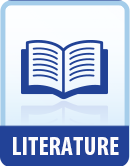|
This section contains 295 words (approx. 1 page at 400 words per page) |

|
Bildungsroman Summary & Study Guide Description
Bildungsroman Summary & Study Guide includes comprehensive information and analysis to help you understand the book. This study guide contains the following sections:
This detailed literature summary also contains Bibliography on Bildungsroman by .
Bildungsroman is the name affixed to those novels that concentrate on the development or education of a central character. German in origin, "bildungs" means formation, and "roman" means novel. Although The History of Agathon, written by Christoph Martin Wieland in 1766-1767, may be the first known example, it was Johann Wolfgang von Goethe's Wilhelm Meister's Apprenticeship, written in 1795, that took the form from philosophical to personal development and gave celebrity to the genre.
More than any other type of novel, the Bildungsroman intends to lead the reader to greater personal enrichment as the protagonist journeys from youth to psychological or emotional maturity. Traditionally, this growth occurs according to a pattern: the sensitive, intelligent protagonist leaves home, undergoes stages of conflict and growth, is tested by crises and love affairs, then finally finds the best place to use his/her unique talents. Sometimes the protagonist returns home to show how well things turned out. Some bildungsromane end with the death of the hero, leaving the promise of his life unfulfilled. Traditionally, English novelists complicate the protagonist's battle to establish an individual identity with conflicts from outside the self. German novelists typically concentrate on the internal struggle of the hero. The protagonist's adventures can be seen as a quest for the meaning of life or as a vehicle for the author's social and moral opinions as demonstrated through the protagonist.
The Bildungsroman was especially popular until 1860. However, anti-German sentiment during the world wars contributed to the demise of its influence, along with the emergence of a multitude of modern experiments in novel writing. Nonetheless, James Joyce wrote his Bildungsroman, A Portrait of an Artist as a Young Man, in 1916, and the genre has continued to be adopted, with distinguishing variations, by writers of many nationalities.
Read more from the Study Guide
|
This section contains 295 words (approx. 1 page at 400 words per page) |

|



